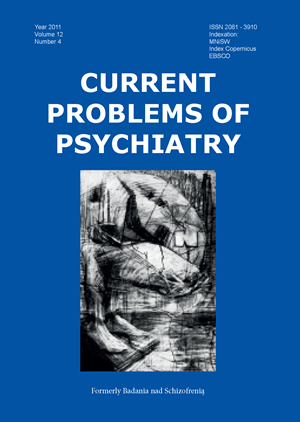Asssesment of caspase 1 activation in L-arginine induced inflammation resulting from necrosis, in rats’ hepatocytes
Abstract
In our previous studies we analyzed the influence of nitric oxide (NO) on rats’ liver.
The results showed that L-arginine as a nitric oxide precursor doesn’t induce apoptosis of hepatocytes. In present study we was observing expression of caspase 1, an enzyme activated during inflammation results from necrosis.
The rats used in this experiment were divided into 2 equal groups. Experimental: rats received per os L-arginine 40mg/kg body weight, every other day for 2 weeks and were decapitated after 3 weeks of the experiment. Control rats received per os 2ml of distilled water every other day for 2 weeks and were decapitated after 3 weeks of the experiment.
Specimens of the liver taken after decapitation were examined in immunohistochemical way using standard three step method to detect immunolocalization of caspase 1. The results of immunohistochemical examinations were subjected to qualitative evaluation taking into account the intensity of colour reaction at the antigen-antibody site in rat liver examined in individual groups. The quantitative evaluation was using the Analysis-pro software. The surface area of cells with positive reaction (+) was calculated.
The quantitative evaluation of caspase 1 expression showed that the area occupied by positive caspase 1 reaction in the rat liver of the experimental group was comparable to that in the control group. The study shows that L-arginine as a donor of exogenous nitric oxide did not have a necrotic effect on the hepatocytes of the rats.
References
1. Pedrycz A., Zwierzyńska E., Siermontowski P., Orłowski M. Caspase 8 - biomarker of extrinsic pathway of apoptosis in ex-ogenic nitric oxide (NO) - induced death of rats' hepatocytes. Curr. Probl. Psychiatry, 2011; 12: 356-359.
2. Jendryczko A. Apoptoza-kontrolowana śmierć komorki. Post Nauk Med, 1995; 8: 267-270.
3. Klupa T. Apoptoza-od teorii do praktyki. Przegl Lek, 1998; 55: 528-531.
4. Klinge O. Cytologic and histologic aspects of toxically induced liver reactions. Current topics in pathology. Ed.: Grundmann E., Kirsten W.H., Springen-Verlag Berlin, Heidelberg, New York V, 1973; 58: 91.
5. Sandritter W., Riede U.N. Morphology of liver cell necrosis. In: Pathogenesis and mechanism of liver cell necrosis. Ed.: Keppler D., MPT, 1974.
6. Chmielewski M., Linke K., Zabel M., Szuber L. Apoptosis in the liver. Gastroent Pol, 2003; 10: 453-462.
7. Kiliańska Z.M., Miskiewicz A. Kaspazy kregowcow; ich rola w przebiegu apoptozy. Post Biol Kom, 2003; 30: 129-150.
8. Sulejczak D. Apoptosis and methods of identification of thi phenomenon. Post Biol Kom, 2000; 27: 527-568.
9. Domiński Z. Apoptoza: śmierć komórek w życiu organizmów zwierzęcych. Kosmos, 1999; 48: 385-396.
10. Fabbi M., Marimpietri D., Martini S., Brancoloni C., Amoresano A., Scaloni A., Bargellesi A., Cosulich E. Tissue transglutaminase is a caspase substrate during apoptosis. Cleavage causes loss of transamidating function and is a biochemical marker of caspase 3 activation. Cell Death Differ, 1999; 6: 992-1001.
11. Izdebska M., Grzanka A., Ostrowski M. Rak pęcherza moczowego – molekularne podłoże genezy i leczenia. Kosmos, 2005; 54: 213-220.
12. Faubel S., Ljubanovic D., Reznikow L., Somerset H., Dinarello CA., Edelstein CL. Caspase-1-deficient mice are protected against cis-platin-induced apoptosis and acute tubular necrosis. Kidney Int, 2004; 66: 2202-2213.


